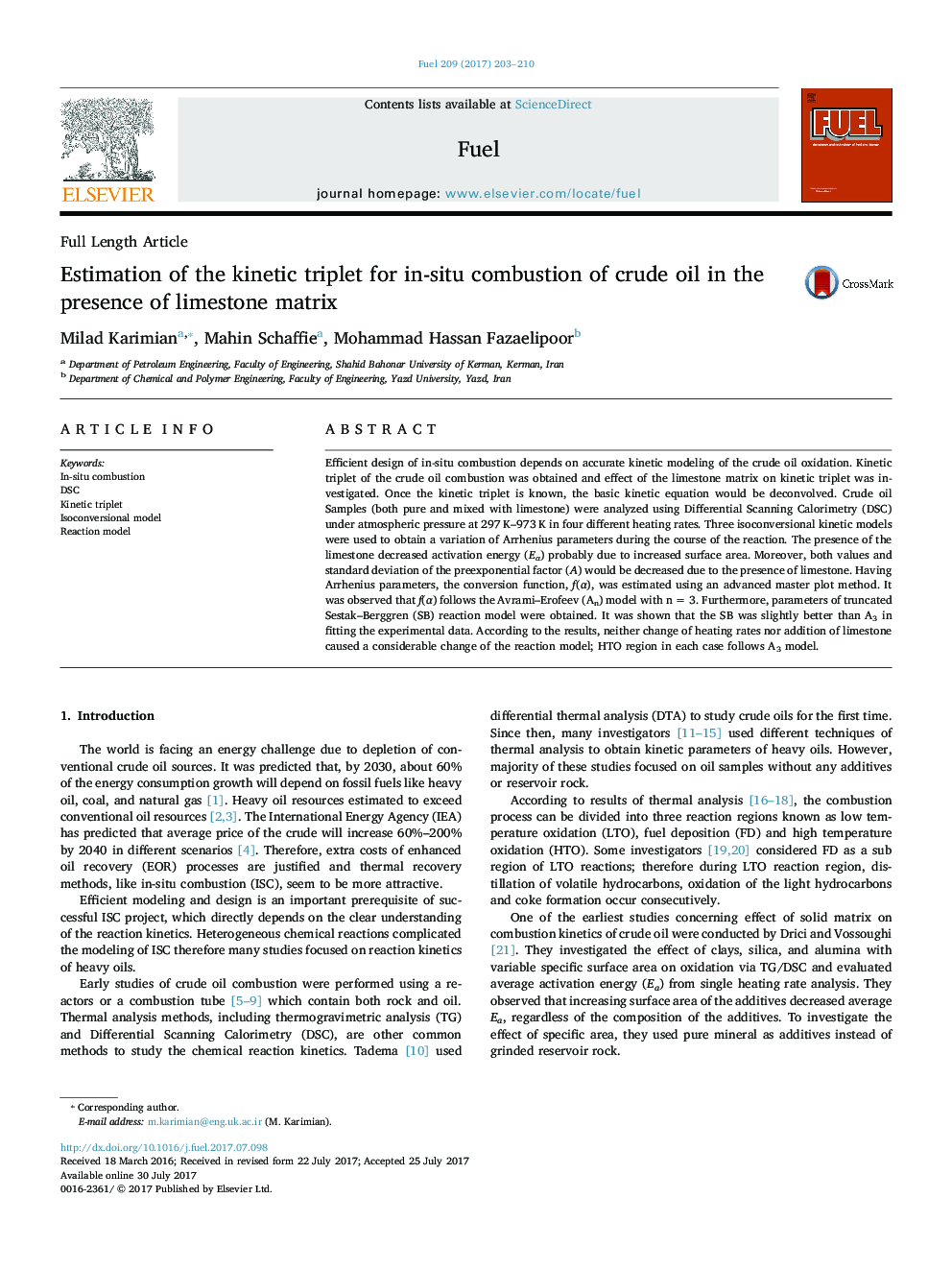| Article ID | Journal | Published Year | Pages | File Type |
|---|---|---|---|---|
| 6473849 | Fuel | 2017 | 8 Pages |
â¢Effect of limestone on kinetic triplet of crude oil combustion were investigated.â¢Limestone decreased with the average activation energy of the crude oil.â¢Adding limestone decreased values and standard deviation of preexponential factor.â¢Reaction model was not affected by addition of limestone.â¢It is recommended to analyze crude oil combustion in the presence of limestone.
Efficient design of in-situ combustion depends on accurate kinetic modeling of the crude oil oxidation. Kinetic triplet of the crude oil combustion was obtained and effect of the limestone matrix on kinetic triplet was investigated. Once the kinetic triplet is known, the basic kinetic equation would be deconvolved. Crude oil Samples (both pure and mixed with limestone) were analyzed using Differential Scanning Calorimetry (DSC) under atmospheric pressure at 297 K-973 K in four different heating rates. Three isoconversional kinetic models were used to obtain a variation of Arrhenius parameters during the course of the reaction. The presence of the limestone decreased activation energy (Eα) probably due to increased surface area. Moreover, both values and standard deviation of the preexponential factor (A) would be decreased due to the presence of limestone. Having Arrhenius parameters, the conversion function, f(α), was estimated using an advanced master plot method. It was observed that f(α) follows the Avrami-Erofeev (An) model with n = 3. Furthermore, parameters of truncated Sestak-Berggren (SB) reaction model were obtained. It was shown that the SB was slightly better than A3 in fitting the experimental data. According to the results, neither change of heating rates nor addition of limestone caused a considerable change of the reaction model; HTO region in each case follows A3 model.
